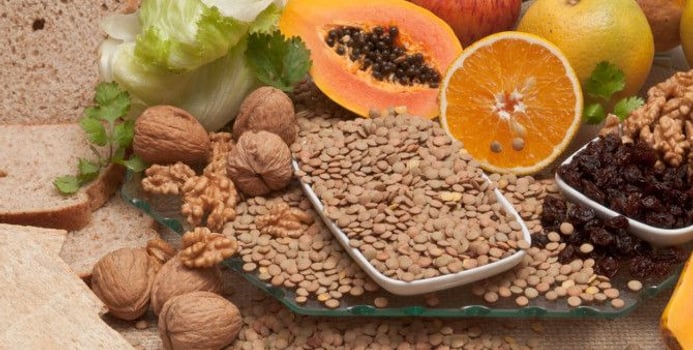If you talk to any health nut, you will hear that fiber is a key ingredient in keeping your weight under control while keeping your digestive system regular. Studies have also shown that fiber can help prevent heart disease and diabetes. Most people need at least 20 grams of fiber per day, but depending on your age and gender, you may need up to 35 grams per day.
While you may have heard that good sources of fiber come from fruit with skin, green leafy vegetables, and whole grains, there are other sources of fiber that may surprise you.
1. Beans
Either raw or canned, beans provide a lot of fiber. Depending on the type of bean, 1 cup can offer between 7.6 to 19.1 grams of fiber. Add beans to dishes instead of meat for a filling meal. There are many varieties of beans that suit almost any type of dish, including include chickpeas (used in hummus), soybeans (such as edamame), baked beans, lentils, and refried beans.
2. Berries
Strawberries, blueberries, blackberries, and raspberries all provide a good source of fiber. Raspberries have the most fiber with 1 cup offering 11 grams of fiber, while strawberries have the lowest amount per serving at 3 grams. Add colorful berries (fresh or frozen) to yogurt, smoothies, ice cream, cereal, or salads.
3. Green Peas
Often considered a starchy vegetable that most people try to avoid, a serving (1 cup) of frozen peas has 8.8 grams of fiber. No longer feel guilty about eating this starchy vegetable and instead add it to your meals to help you feel fuller longer.
4. Canned Pumpkin
With 7 grams of fiber in a 1 cup serving, canned pumpkin gives you an excuse to have a slice of pumpkin pie during the holiday season. Just remember that it is the pumpkin, not the pie, which provides a good source of fiber.
5. Whole Grain Pasta
A cup of whole-wheat noodles - like spaghetti noodles - provides 6.3 grams per serving. You must find packages labeled as "whole grain" or "whole wheat." If you are unsure, read the ingredients label and make sure the first ingredient listed includes the word "whole." Add 1 cup of tomato paste to your sauce, and you just increased the fiber content by 10 grams.
6. Whole Wheat Flour and Cornmeal
These are both excellent sources of fiber that you can incorporate into your baking recipes. One cup of whole wheat flour provides 12.8 grams of fiber, and 1 of yellow cornmeal provides 9.8 grams of fiber. When your recipe calls for white flour, try to substitute at least 1/3 of the amount with whole wheat flour to provide a source of fiber. Try baking homemade cornbread from scratch to get the extra fiber from cornmeal. For other sources of high fiber grains, find foods made with barley, bulgur, oat bran, or buckwheat.
If these foods do not fit your taste palette, just remember that all fruits and vegetables provide a good low-fat source of vitamins and minerals, with some offering more fiber than others. Your favorite cereal may also be high in fiber; check the Nutrition Facts label for fiber for the %Daily Value column (%DV). If the fiber content is greater than 20%, you've got a good source. Incorporating fiber into your diet will help you lead a healthier life.
Rhea Li is a Registered Dietitian who received her Bachelor's degree in Nutrition and Master's degree in Public Health from the University of Texas. She has a special interest in working with children and has received her certification in pediatric weight management. Currently, she is working on a research study to determine the importance of nutrition in pediatric cancer patients. In the past, she has worked with pregnant women and their children. In her spare time, she enjoys being with family, exercising, traveling and of course, eating. To contact Rhea, please visit dazzlingdietitian.blogspot.com or her Twitter account, Rhea_Li



